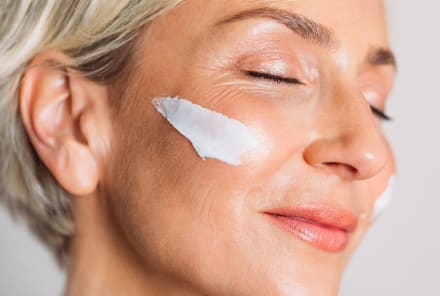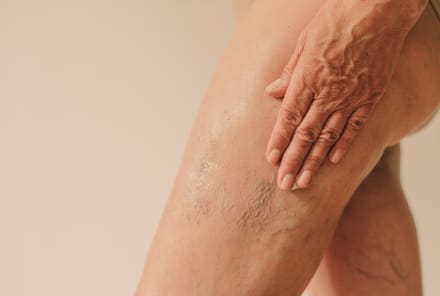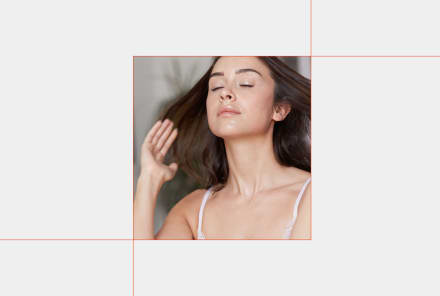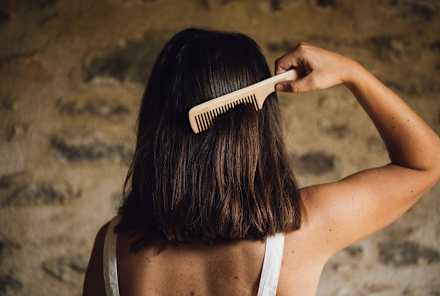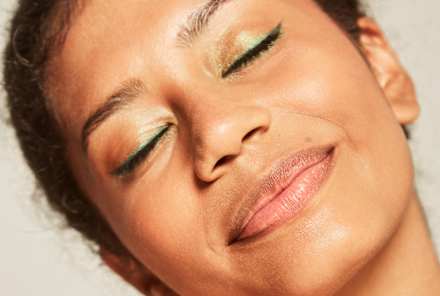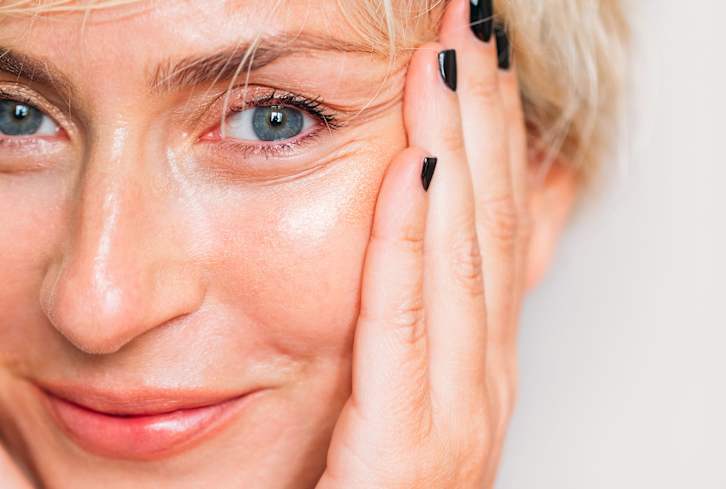Advertisement
DIY Baking Soda Shampoo: Try This Clarifying Hair & Scalp Wash


If your scalp is experiencing excess buildup, it might be time for a clarifying shampoo. There are many options on the market, but natural beauty fans swear by a DIY baking soda shampoo to deep clean your scalp and hair—without the surfactants and sulfates of traditional products.
Let's look at how the treatment is supposed to work, along with the safest ways to use it.
What to know before using a baking soda shampoo
Like all home remedies, baking soda shampoo should be used with care. Baking soda has a very high pH—between 8 and 9—which makes it alkaline. However, like the rest of your skin, your scalp is naturally acidic to prevent bacterial and fungal growth. This means alkaline products like baking soda can mess with the pH of your scalp. "The high alkalinity1 of baking soda can disrupt the hair cuticle, leaving the hair dry, frizzy, and prone to breakage," says Kate Denniston, N.D., a licensed naturopathic doctor and founder of Los Angeles Integrative Health.
Board certified dermatologist Keira Barr, M.D., agrees: “Due to the abrasive nature, not only can the baking soda damage the hair shaft and contribute to hair breakage and split ends, it higher pH may also harm your scalp causing redness, inflammation and itchiness. Baking soda also opens up the hair cuticles, which causes water absorption: some absorption can be helpful, but too much can weaken the hair.”
Essentially: Baking soda shampoo should only be used when your scalp needs a deep clean—and the same goes for any clarifying shampoo. If you have very dry hair, consider skipping this shampoo and sticking to an apple cider vinegar rinse (more on that later). But if you'd like to test it out, know that it isn't meant to be used on the regular.
And you should also keep in mind that some skin types are especially sensitive to baking soda. Always do a patch test on your inner arm before slathering it on your scalp. Safety first, folks.
DIY recipe
It’s a very easy concoction:
- 1 part baking soda
- 3 parts lukewarm water
- Small bowl
Combine and mix until evenly dispersed and it becomes a paste.
Instructions for using a baking soda shampoo
According to fans of baking soda shampoo, its abrasive texture can exfoliate and cleanse the scalp, almost like a scalp scrub. There isn't scientific research on this specific use, though, so the benefits are purely theoretical and anecdotal.
Interested in trying it? Here's how to make and use this popular hair care treatment:
Know when you need a baking soda shampoo
Since clarifying shampoos aren't for daily use, let's talk about when you should use them. The main sign is when you notice excess scalp buildup, which you can usually feel on the scalp, and it often produces white flakes similar to dandruff. This happens when hair care products, dead skin cells, sebum, and sweat get together and overstay their welcome.
You might also need a clarifying shampoo if your hair hurts: As strange as it sounds, all that gunk can cause scalp inflammation and, eventually, painful hair. Ouch.
Make your mix with baking soda and water
To make DIY baking soda shampoo, you'll need 1 part baking soda and 3 parts cool or lukewarm water. (Steer clear of warm or hot water, which will make the baking soda clump up.) If you have shoulder-length hair, use 2 to 3 tablespoons of baking soda and 6 to 9 tablespoons water. If you have shorter or longer hair, adjust the ingredients accordingly.
Mix the ingredients in a small bowl until they form a thick paste. Some shampooers like to add a few drops of essential oil. Pour the mixture into a clean and empty bottle; an old travel-size shampoo bottle is perfect for the job. Use a funnel to make this step easier.
Note that the shampoo works best when it's made right before use—so don't make it and then store it for later.
Apply the shampoo to wet hair
Rinse your hair until every strand is wet, then turn off the water. Apply the shampoo, starting at the scalp and ending at the tips. The mixture will feel gritty and "goopy," which is totally normal. It also won't lather or foam like traditional shampoo because it doesn't contain any soap. Work the mixture into your scalp, but don't scrub too hard. The rough texture of baking soda can cause irritation if you're not gentle. Let it sit for 1 to 3 minutes (indulge in a quick meditation sesh), then rinse out the shampoo with warm water.
Follow with an apple cider vinegar rinse
If you're going to try baking soda shampoo, be sure to finish with an apple cider vinegar rinse. Remember, baking soda has a very high pH, which opens the hair cuticle. "Apple cider vinegar will help seal the hair cuticle to defrizz hair and give it shine," explains Denniston. "[It] will also rebalance the scalp's pH after using baking soda, helping the scalp stay moisturized and protected."
Like baking soda, however, apple cider vinegar may irritate some skin types. Don't overdo the rinse, and only use it when you need a clarifying treatment.
Dry and style your hair as normal
After your rinse, you can dry and style your tresses as usual. But if you have dry hair, you may want to take extra steps to reduce the risk of overdrying. Consider letting your hair air dry or using a blow dryer on a cool setting. Also, while the rinse is meant to lock in moisture, some people like to add a hydrating oil to their ends. Popular options include coconut, olive, and argan oil.
Find the frequency that works for you
It will take time to figure out how baking soda shampoo fits into your hair care routine—if at all. If you have oily locks, a weekly treatment plus regular washing might do the trick. But if you have dry hair, it may work best as a replacement for normal shampooing a few days a month. Everyone is different.
Even then, your ideal frequency might vary as the seasons change. The same goes if you switch hair products or change your workout routine. What's most important is that you pay attention to your individual hair and scalp needs.
The takeaway
While baking soda enthusiasts are all about this shampoo, it isn't a one-size-fits-all treatment. Be mindful of how you use it, and don't hesitate to adjust the ingredients depending on how your scalp reacts. If you experience dryness or irritation, try mixing in more water or applying it sparingly.
